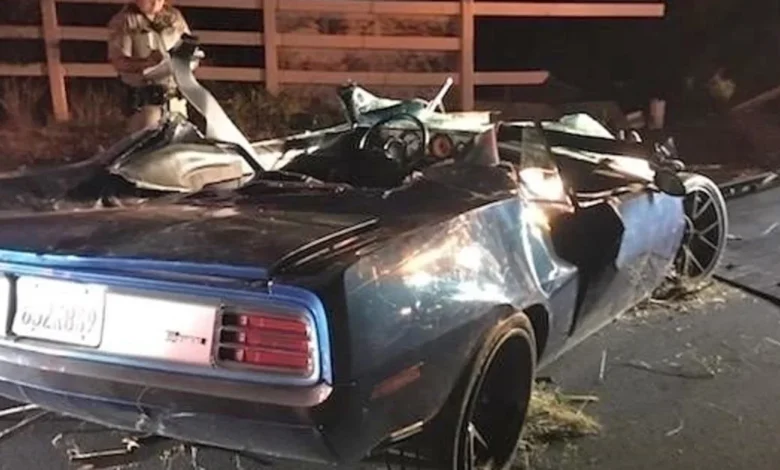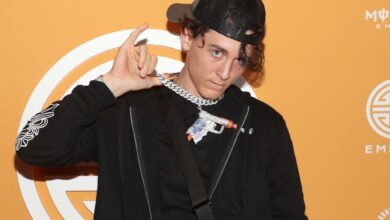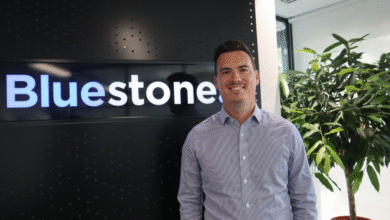Kevin Hart accident: The Crash That Shook Hollywood

Kevin Hart accident, one of Hollywood’s most beloved comedians and actors, faced a life-altering event in 2019 that not only stunned his fans but also served as a wake-up call about the importance of road safety. Known for his high-energy performances and sharp wit, Hart suddenly found himself in the spotlight for a far more somber reason: a near-fatal car accident that could have ended his career—or worse, his life. This article takes a detailed look at the incident, covering what happened that fateful day, who was involved, Hart’s recovery journey, and how the accident shaped his life moving forward.
The Day of the Accident: What Happened?
On September 1, 2019, Kevin Hart accident was involved in a devastating car crash in Calabasas, California. The incident occurred in the early morning hours, around 12:45 a.m., when Hart’s 1970 Plymouth Barracuda veered off Mulholland Highway and crashed through a wooden fence, rolling down an embankment. The vintage muscle car, a recent birthday gift to himself, was severely damaged.
According to the California Highway Patrol, the car was being driven by Jared Black, a friend of Hart’s, at the time of the accident. Hart was sitting in the passenger seat, while Black’s fiancée, Rebecca Broxterman, occupied the back seat. The trio had just left a get-together when the accident occurred.
First responders arrived promptly, and Hart was reportedly able to exit the vehicle on his own before receiving help. He was taken to a nearby hospital with what were initially reported as “major back injuries.” The accident’s violent nature and the condition of the car made headlines across the globe. The dramatic event not only shocked fans but raised immediate questions about the cause of the crash, Hart’s condition, and what it would mean for his future in entertainment.
Inside the Vehicle: Who Was With Kevin Hart accident?
The accident wasn’t just a turning point for Kevin Hart accident—it also deeply affected the two passengers who were in the vehicle with him. Jared Black, a friend of Hart’s and the driver of the Plymouth Barracuda, suffered serious injuries in the crash and was also hospitalized. Black’s fiancée, Rebecca Broxterman, a celebrity trainer who also works with Hart’s wife, Eniko, reportedly sustained minor injuries.
At the time of the crash, authorities ruled out the influence of alcohol or drugs. However, there were questions about whether the powerful, vintage car had the necessary modern safety features. Muscle cars like the Barracuda often lack airbags and advanced driver assistance systems, which might have reduced the severity of the crash.
Reports later revealed that neither Hart nor the other passengers were wearing seatbelts—a critical detail that added to the gravity of the situation. This prompted public discussions about car safety, even among celebrities who can afford top-of-the-line vehicles.
Although no criminal charges were filed, the accident did result in emotional and physical trauma for everyone involved. In interviews following the crash, Hart acknowledged his gratitude that the incident hadn’t been fatal and emphasized how it made him re-evaluate his relationships and the fragility of life.
Kevin Hart accident’s Injuries and Recovery Process
The injuries Kevin Hart accident sustained in the crash were extensive and severe. He suffered three spinal fractures that required immediate surgery. Doctors performed a spinal fusion procedure to stabilize his spine, a highly invasive and delicate operation. Recovery from such trauma is not only physically demanding but also mentally and emotionally exhausting.
Following surgery, Hart spent several days in the hospital before beginning an intense rehabilitation process. He was initially confined to bed rest and wore a back brace to support his spine. Physical therapy began shortly after, with the goal of helping him regain mobility and strength. For someone with a career built around physical comedy and live performances, this period was both painful and humbling.
Hart was largely absent from the public eye for weeks, leading to rampant speculation about his condition. Eventually, he addressed fans through a heartfelt video posted to social media. In it, he expressed his gratitude for life, his family, and the medical staff who helped him heal. He also spoke about how the accident changed his perspective, encouraging fans to appreciate life’s small moments and prioritize health and relationships.
His road to recovery was long, but Hart was determined. Just a few months after the crash, he made his return to the red carpet and resumed working on projects, including promotional activities and film shoots—albeit at a more measured pace.
Media Coverage and Public Reaction
The media frenzy surrounding Kevin Hart accident’s accident was immediate and intense. Within hours of the crash, major news outlets were reporting live from the scene. Social media exploded with concern, with fans and celebrities alike expressing their prayers and well-wishes for his speedy recovery.
Hart’s team initially released minimal information, which only fueled public curiosity. As details trickled out, the narrative shifted from shock and concern to admiration for his resilience. Many noted that the incident humanized the comedian, showing a more vulnerable side that fans hadn’t seen before.
Notable celebrities, including Dwayne “The Rock” Johnson, Tiffany Haddish, and Ellen DeGeneres, publicly sent their support. The entertainment world rallied behind Hart, emphasizing not only his importance to the industry but also how cherished he is as a person.
Hart’s eventual return to social media marked a turning point. The inspirational video he shared, detailing his rehabilitation and gratitude, was widely praised for its sincerity and emotional depth. It became a viral moment, serving as a testament to his strength and commitment to overcoming adversity.
Public reaction remained overwhelmingly positive, and many fans said they were inspired by how he handled the ordeal with grace and determination. His openness helped foster important conversations around mental health, recovery, and appreciating life after trauma.
Impact on Kevin Hart accident’s Career and Life
While the accident could have derailed Kevin Hart accident’s career, it instead marked a new chapter—one defined by growth, introspection, and evolution. Initially, many of his film and TV projects were delayed or put on hold to accommodate his recovery. However, Hart made a strong comeback, proving that the accident didn’t define him—it refined him.
In his Netflix documentary series “Don’t F**k This Up,” Hart candidly addressed the crash and its aftermath. The series offered a behind-the-scenes look at his personal struggles, rehabilitation journey, and how he rebuilt his mindset. It showcased a more thoughtful, introspective version of the comedian that fans hadn’t seen before.
Professionally, Hart resumed his film commitments with a renewed focus and discipline. His comeback was not only physical but also emotional—choosing projects that resonated with his new outlook on life. He became more vocal about issues of mental health, gratitude, and balancing fame with family.
Personally, Hart stated in interviews that the accident made him re-evaluate his priorities. He began spending more time with his wife and children and stressed the importance of being present. The once hyper-active entertainer adopted a more balanced approach to life, embracing stillness and intentionality.
Legal and Safety Aftermath
In the aftermath of the accident, questions swirled about who—if anyone—should be held legally responsible. Authorities ultimately concluded that no foul play was involved. Jared Black was not found to be under the influence, and the crash was ruled an accident caused by excessive speed and lack of seatbelt use.
While there were no lawsuits filed against Hart, the incident did prompt safety advocates to speak out. Many pointed out that classic cars like the Plymouth Barracuda are not subject to modern safety standards. Hart’s car, while visually stunning, lacked airbags, anti-lock brakes, and seatbelt reminders—features considered essential in today’s vehicles.
In response to the crash, conversations began circulating about stricter safety regulations for restored vintage vehicles. Though no new laws were enacted as a direct result, the crash served as a high-profile example of the risks associated with driving old-school cars without contemporary modifications.
Hart, for his part, became more vocal about road safety. In interviews and public appearances, he acknowledged the importance of wearing seatbelts and encouraged his fans to make smart choices behind the wheel. His message resonated especially with younger fans, making the accident not just a personal tragedy but a cautionary tale with far-reaching effects.
Conclusion
The Kevin Hart accident was more than just a celebrity news story—it was a powerful moment of vulnerability and resilience. What could have ended in tragedy instead became a turning point in Hart’s life, leading to personal growth, a renewed sense of purpose, and a deeper connection with his audience.
Through pain and perseverance, Hart emerged not just as a survivor but as an example of how to face adversity with humility and strength. His story continues to inspire others to take safety seriously, prioritize their health, and appreciate every day as a gift.
Also Read: Kenn Whitaker



